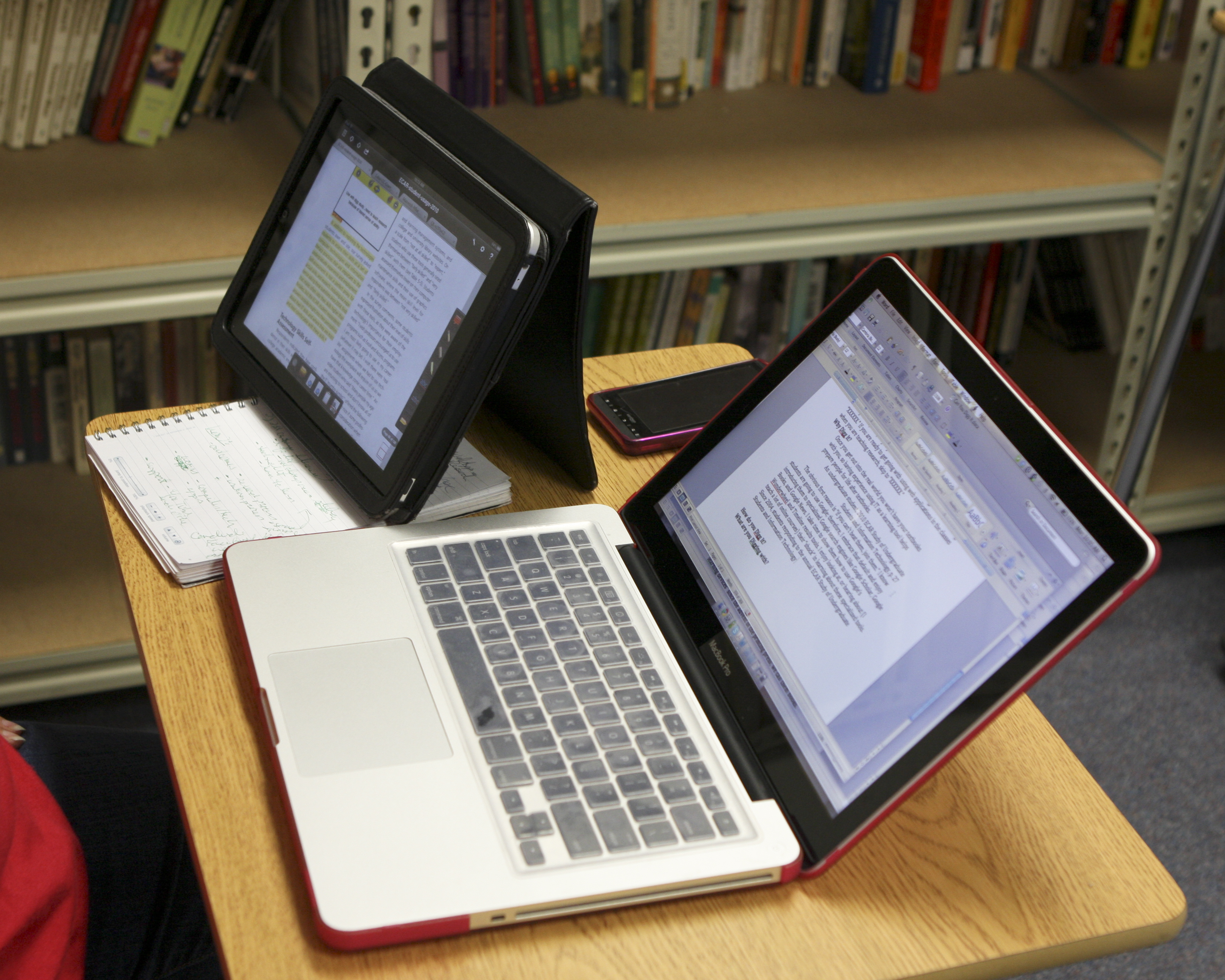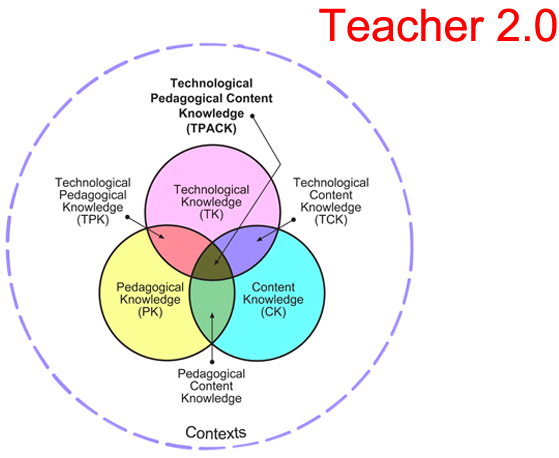Changing face of professors
Fear of Teacher 1.0
The way in which today’s nontraditional students engage with and within the read write web is couched within the rhetoric of the post-modern where we, the institution, cannot control the outcomes. We can only provide the information and act as a mediator of information. Cool (1993) argues that a picture is worth a thousand words but we do not get to choose what those words are, nor are they even in the language of our choosing. Programmatically tackling the gap between higher education and the dual enrollment forces an intricate and unknown webbing with which the institution is uncomfortable.
The perceived gap and mentality of some researchers (Prensky, 2005; Long, 2005) who study our 21st century students in terms of 20th century schooling lack vision that moves beyond the “us” versus “them” commentary; they’re trapped in a dichotomous pigeon hole that situates the institution in an obsolete space non-navigable by Student 2.0. The perceived incompatibility of the institution trapped in a linear hierarchy of schooling with a lack of communicative concerns about learning and access to knowledge in the terms of today’s fluid and spiraling needs in education demonstrates that the formal institutions are often said to be “poorly placed to deal well with the social, cultural, and economic changes that derive from the continuing use of these [digital] technologies” (Bigum and Rowam, 2008, p. 250 qtd. in Selwyn 2009). The institution does not fear just the nontraditional student but also questions the authority of those who are instructing them. One suggestion is that through e-portfolios of credentials and materials the instructors and institutions can communicate directly rather than being buffered by district administration. Without that direct connection a break down of communication occurs that causes continued concern by the institutional instructors.
While this discussion is less about the credentials of the instructors, and while that is important to note, what the institutions seem to fear, in part, is a shift in the type of instructors in these programs. Foucault (1994 [1975]) asserts that individuals readily accept the social groupings imposed upon them, while through an educational lens, at times, the traditional college instructor can misunderstand preparedness of the student through his or her dual associations with both high school and college. Harris & Farris (2010) wonder if we're outsourcing educational services to non-college providers in an inefficient manner, while I contend that these teachers who have embraced the read write web as a pedagogical extension are a new breed of educator who has swirled into our 21st century model of education not through a generational shift in age or demographic but in a knowledge base and understanding of how to smoothly balance the nature of an organic, ever evolving educational system. Professor 1.0, the traditional 20th century instructor, does not understand that these dual enrollment courses in which Student 2.0 is enrolled are taught by this hybrid educator who I call Teacher 2.0.

One Teacher 2.0 uses research she annotated on PDFs using her iPad2 and synthesizing those ideas into an article on her MacBook Pro. (cc) image by Devon Christopher Adams.
These historical fears associated with dual enrollment are a false construct. A shift is occurring in not only how students learn but also in how teachers teach. Professor 1.0 has a difficult time relinquishing the power in the classroom while the changing student-teacher relationship has raised concerns about the realignment of relationships in educational services (Selwyn, 2009). As producers with more direct agency over their own learning, Student 2.0’s natural digital literary approach to their learning makes them more comfortable with a multimodal approach to composition studies in that they post candid video excerpts on places like YouTube and check Ratemyprofessor.com when scheduling classes. While some commentators welcome the empowering nature of these technology practices others portray them in a negative manner - what a former UK Secretary of State for education terms "the sinister downside of modern technology" (Johnson qtd. in Selwyn, 2007). Professor 1.0 fears not only losing control in the classroom but also being mediated by the students; they also question who is educating these students outside the walls of the formal institution. The blurring of these boundaries between educational territories scares the institution, as does the concept of Student 2.0.
Teacher 2.0: Embracing Collaboration
Since 2004 when I first began to wrap my mind around the directionality of the newly anointed read write web and to embrace this rapidly speeding up technology proliferation in our schools, I've been calling myself Teacher 2.0 and more recently English Technologist after a colleague began using this term as well. McCrimmon (2010) calls Teacher 2.0 a hybrid species of educator who uses the rhetoric of web technologies to bridge the gap between the dual enrollment and the post-secondary culture. Hansen and Farris (2010) calls for “real disciplinary collaboration and professionalization that address differences in approaches to” (xxxii) (con)texts within the 21st century composition framework. No longer can high school instructors be seen as brokers of single servings of college composition. Within the open-door model, the dual enrollment instructor must transform into a facilitator and mediator of transdisciplinary discussions couched in a rhetorical, multi-modal and technological framework. While Teacher 2.0 is comfortable doing this naturally, Professor 1.0 fears this shift in pedagogical practices merely because it’s unfamiliar territory.
Technology is a means to justify the end of composition outcomes and has become a seamless extension of the curriculum in the classroom. While, arguably Teacher 2.0 is a master of content knowledge balanced with pedagogy he or she now needs to juggle the technological knowledge as well. Technological Pedagogical Content Knowledge (TPACK) captures the qualities of this new hybrid educator who must find his or her place between the intersection of these qualities (Mishra & Koehler, 2006). To most effectively teach technology, we must model that technology within our disciplines and classes.
